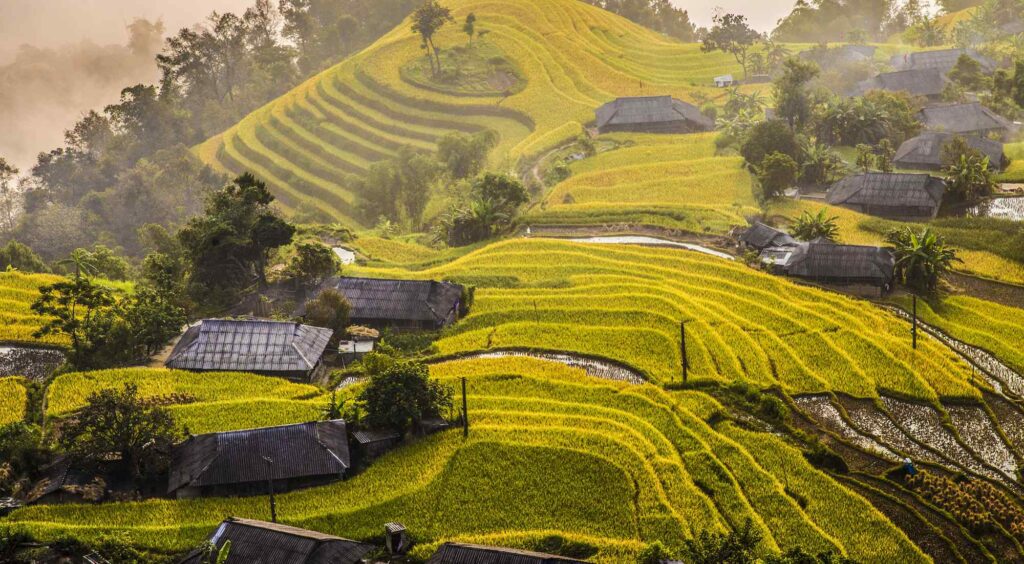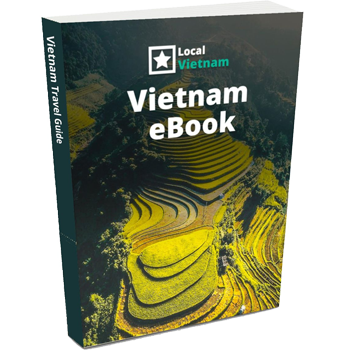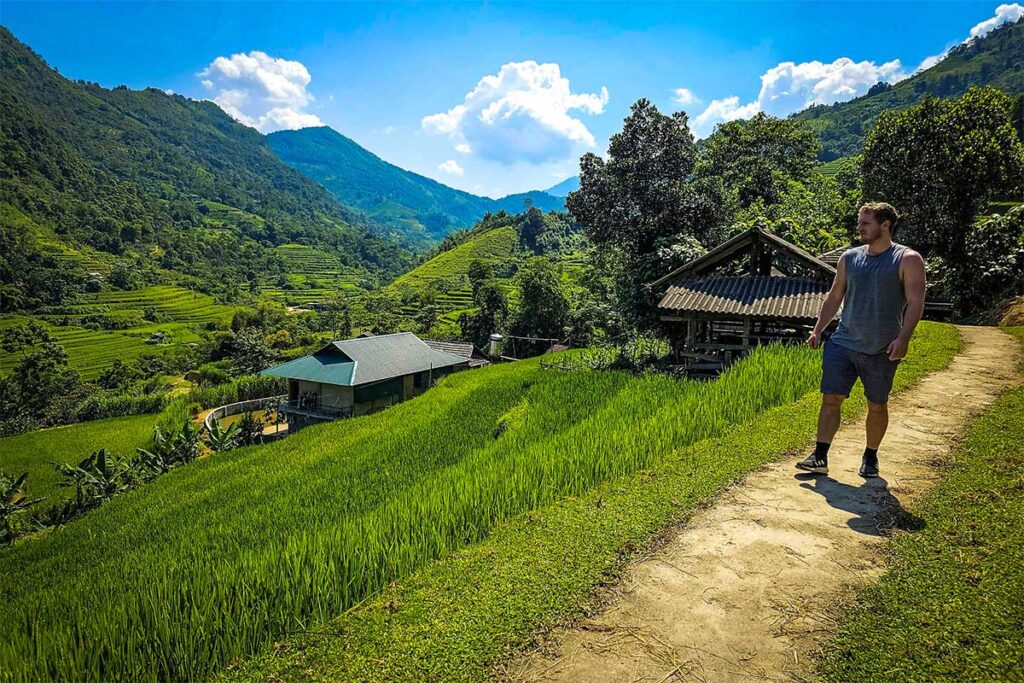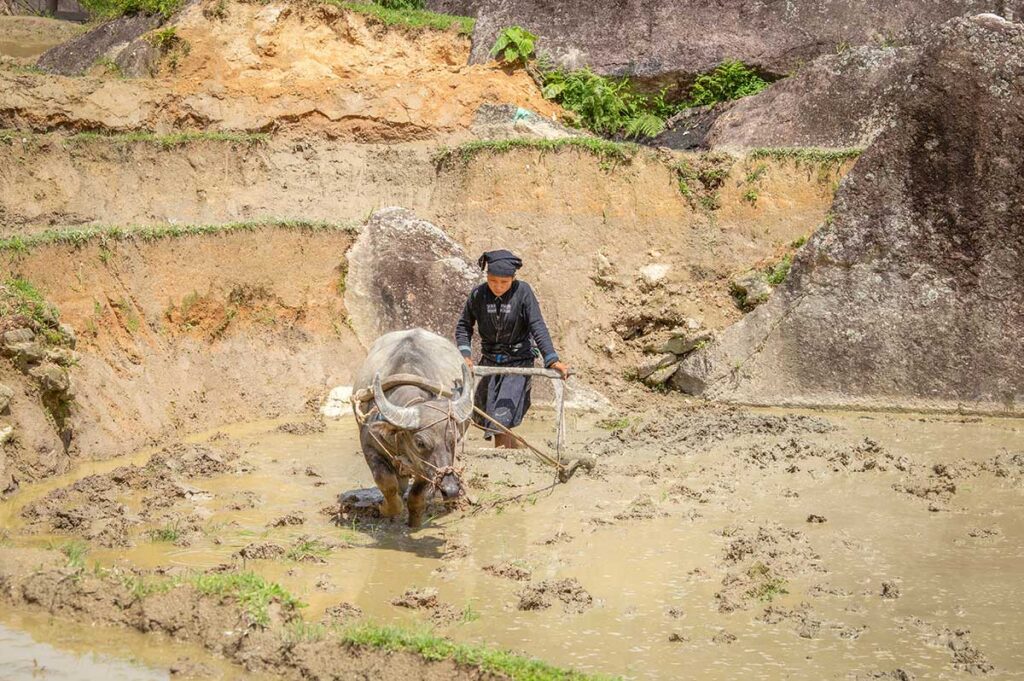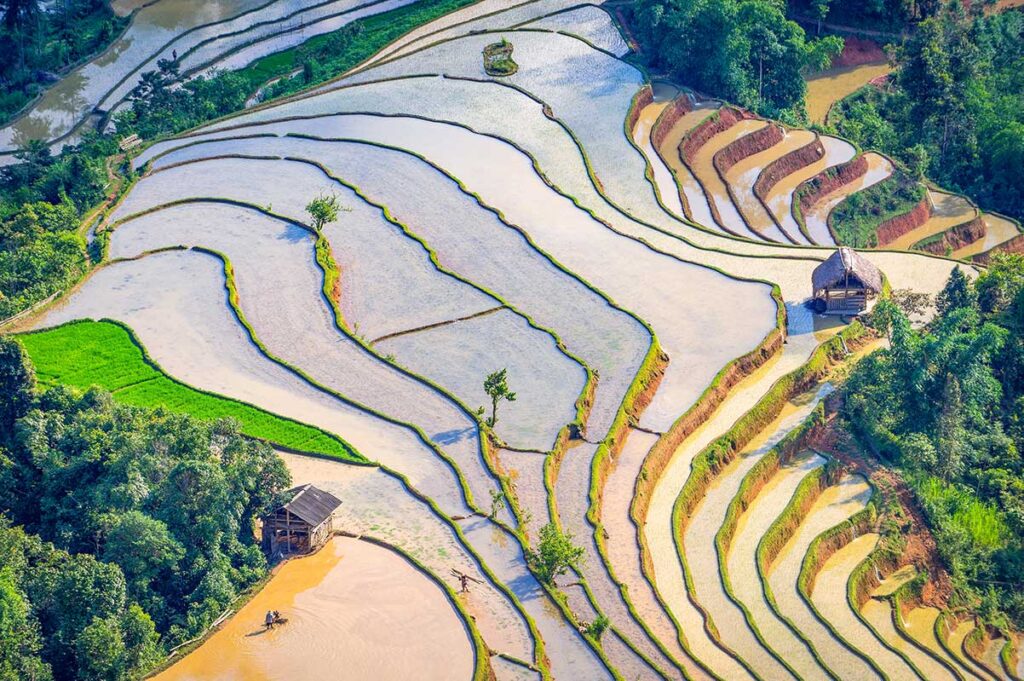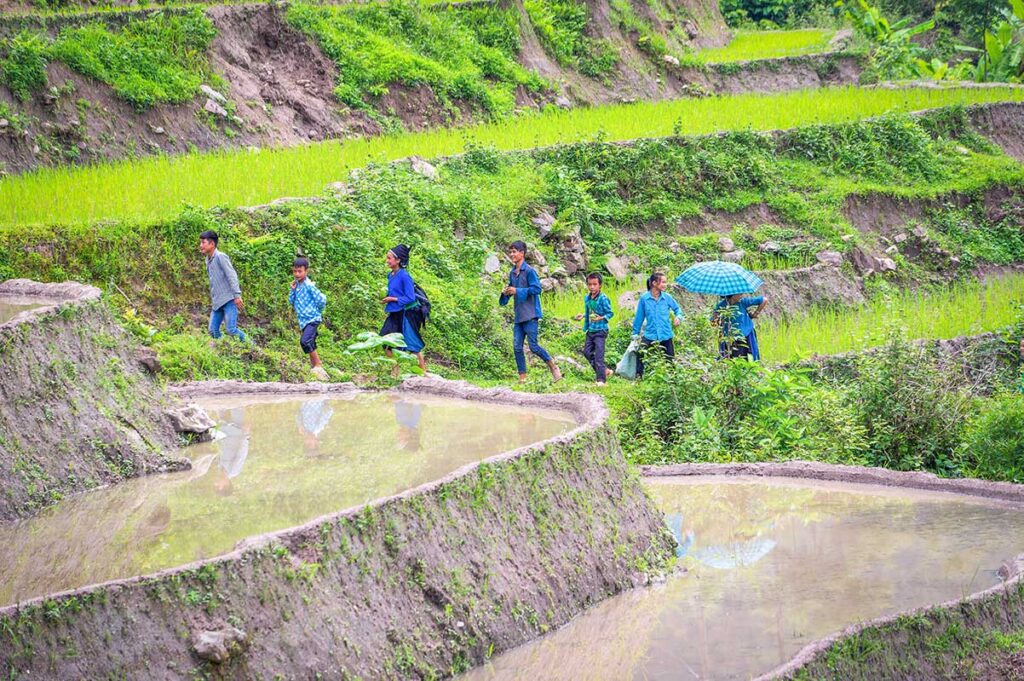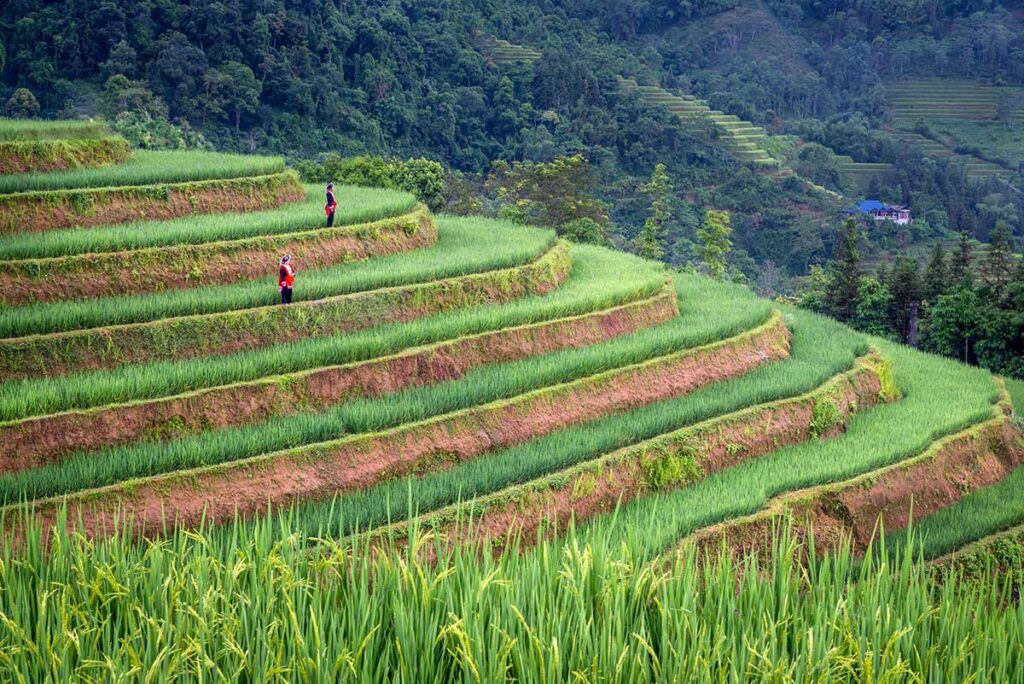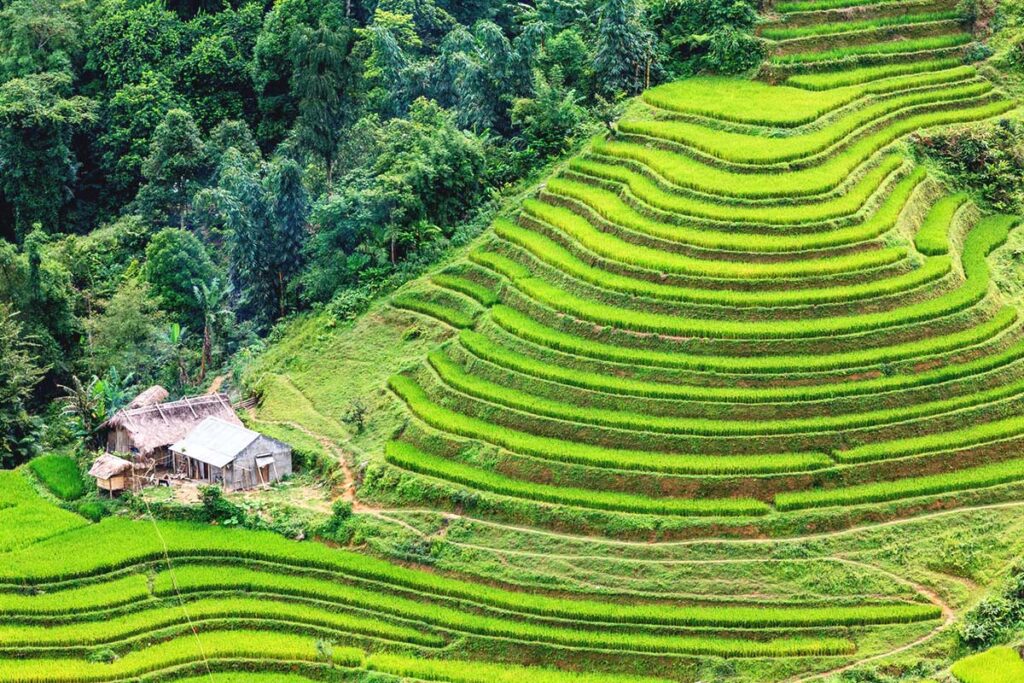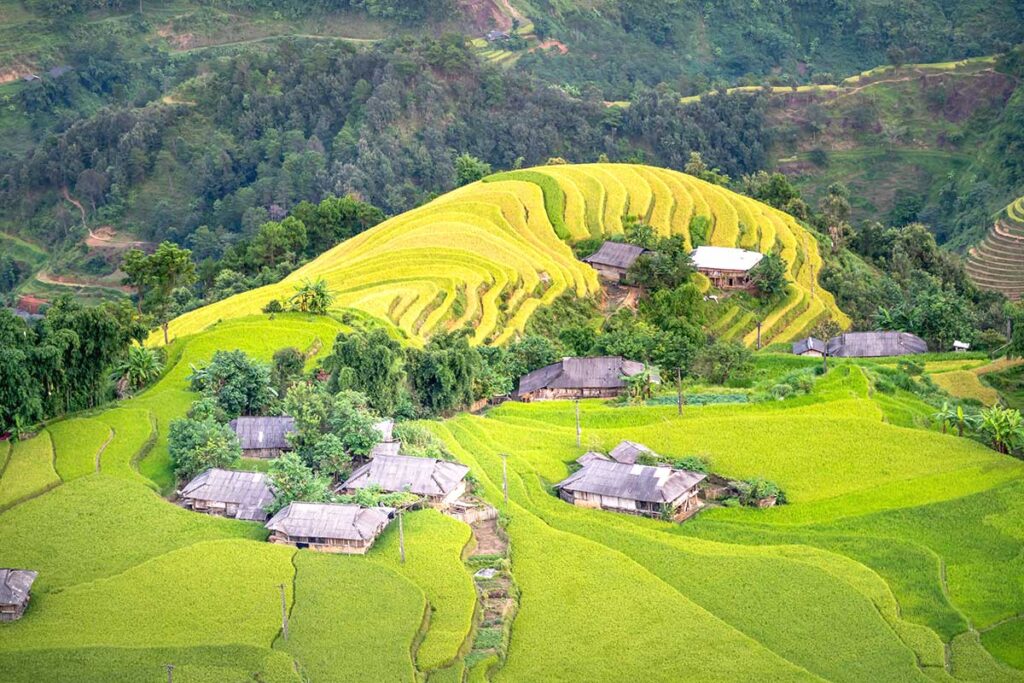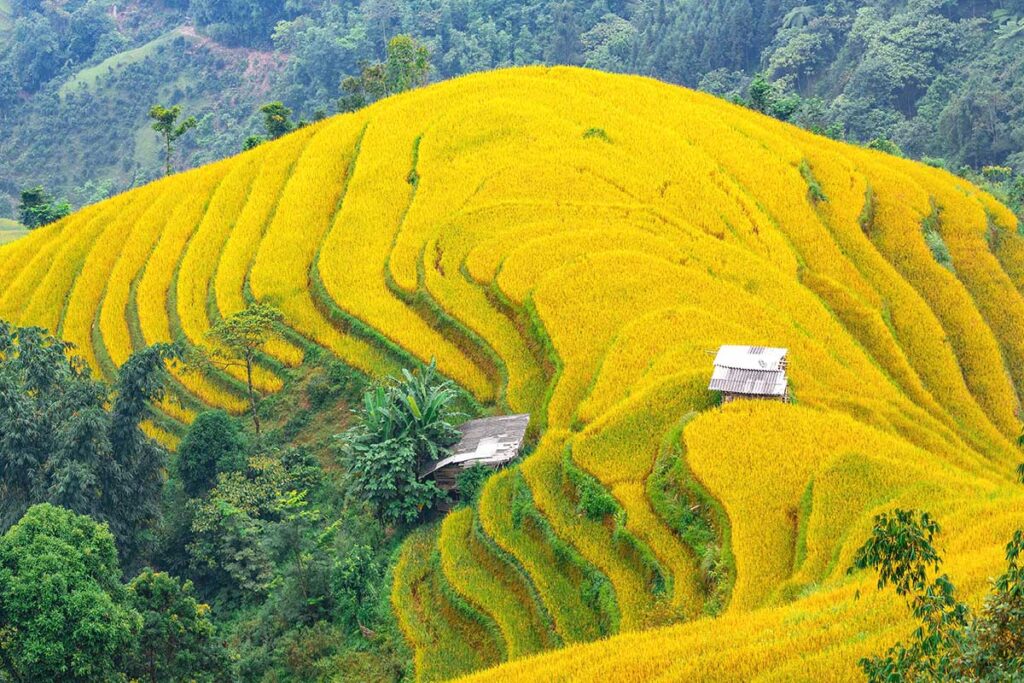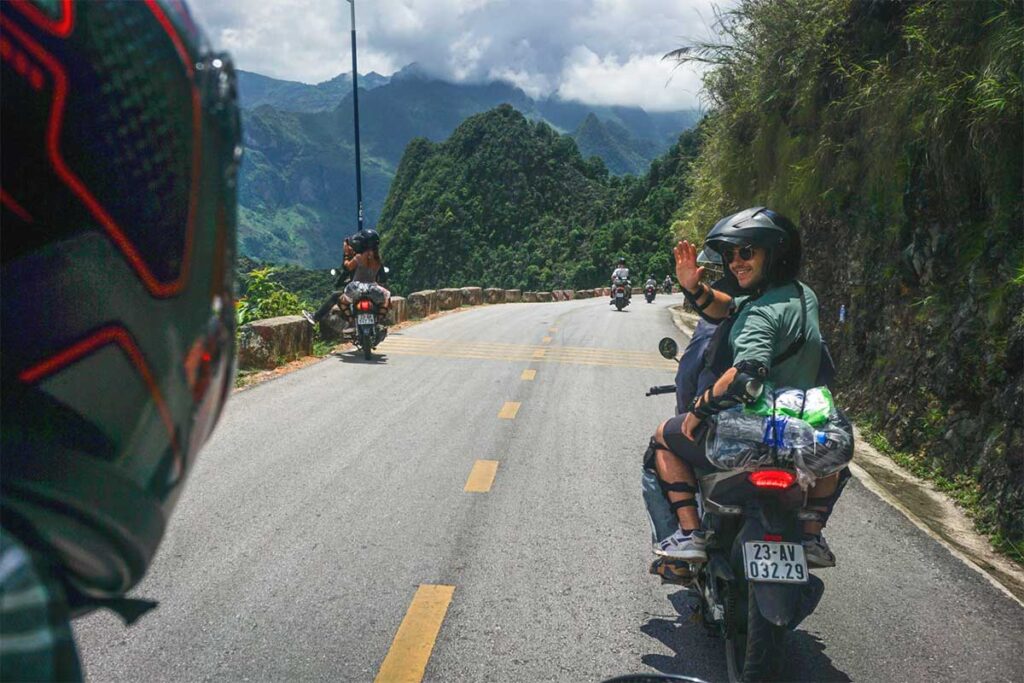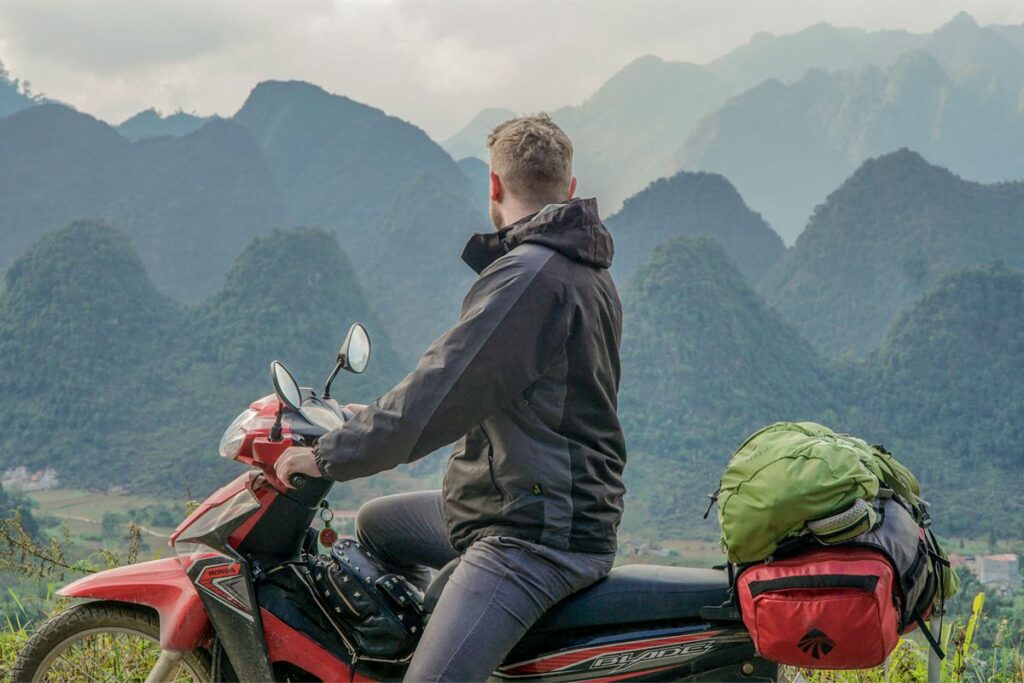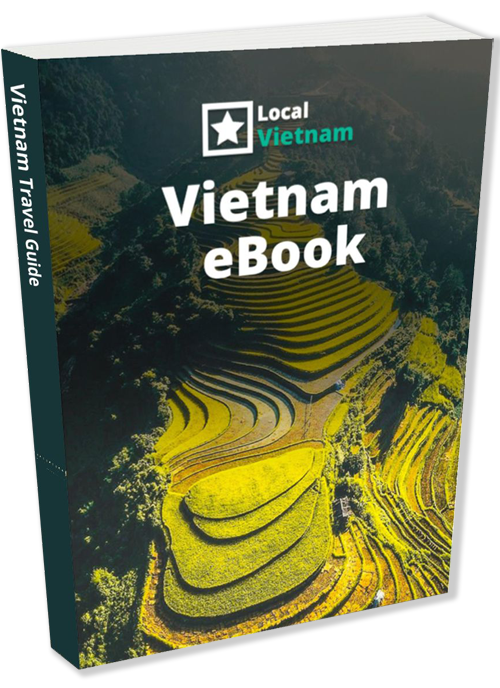Hoang Su Phi: Vietnam’s hidden mountain gem
Tucked away in the far north of Vietnam, Hoang Su Phi is a remote mountainous district in Ha Giang Province, bordering China. Unlike the well-traveled Ha Giang Loop, this region remains largely untouched by tourism, making it one of the most authentic and least explored destinations in Vietnam.
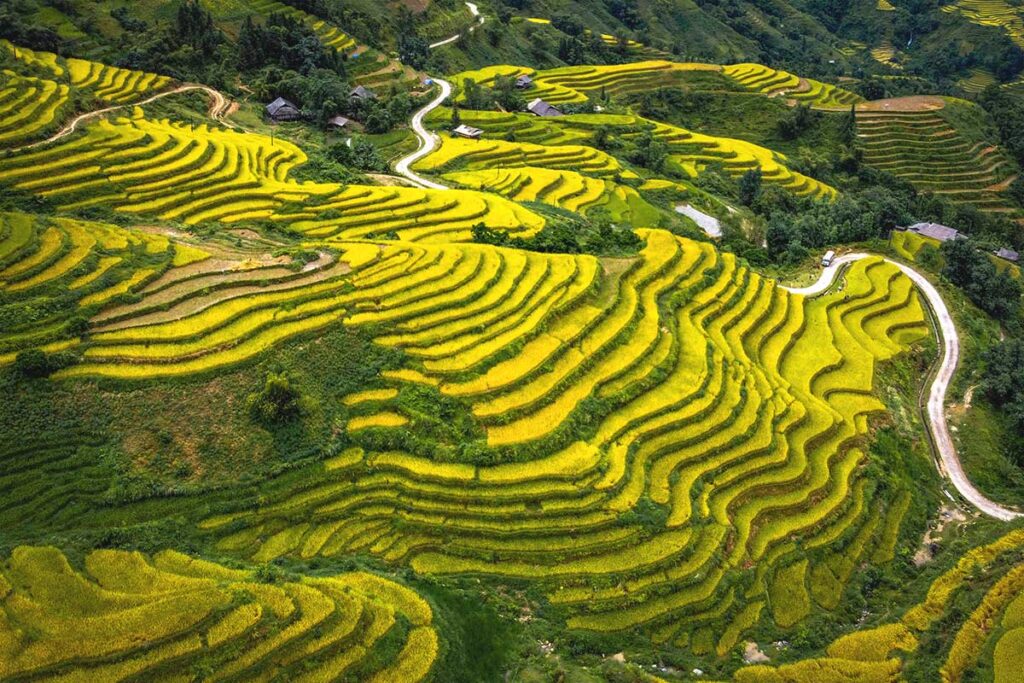
Hoang Su Phi is best known for its breathtaking terraced rice fields, which rank among the most spectacular in Vietnam. While Sapa and Mu Cang Chai also boast stunning terraces, Hoang Su Phi is far more off the beaten track. There are no cable cars, no flashy viewpoints, and no streets lined with luxury hotels—just untouched landscapes, rolling rice fields, and traditional mountain villages.
The district is home to numerous ethnic minority groups, including the Dao, H’mong, Tay, and Nung, each with their own unique traditions, colorful clothing, and deep-rooted cultural heritage. Life here revolves around farming and community, with rice cultivation being the centerpiece of their way of life. Because Hoang Su Phi is so remote, these ethnic communities have preserved their customs and way of living, offering visitors a rare glimpse into a more traditional and unspoiled Vietnam.
Though it may require more effort to reach, Hoang Su Phi rewards travelers with unparalleled natural beauty, rich cultural experiences, and a sense of adventure that few places in Vietnam can offer.
How to get there?
Hoang Su Phi is located in the western part of Ha Giang Province, far from the popular Ha Giang Loop. Even from Ha Giang City, the journey to Hoang Su Phi is around 100 km, taking at least three hours due to the winding mountain roads. Unlike Ha Giang’s more famous routes, Hoang Su Phi is a remote district with no cities. The largest town, Vinh Quang, is still very small and has limited facilities.
Because of this, there are no direct buses to Hoang Su Phi from Hanoi or Ha Giang City, making getting there more challenging. However, for travelers seeking untouched landscapes and some of the most spectacular rice terraces in Vietnam, the effort to reach Hoang Su Phi is well worth it.
Tip: Book a tour to Hoang Su Phi with all transfers included
- Trekking: Walk through stunning rice terraces and remote ethnic minority villages.
- Includes: All transfers from Hanoi, meals, accommodations, and local guides.
Private car
For those who want to travel directly from Hanoi to Hoang Su Phi, the only option is to book a private car with a driver. The journey is over 300 km and takes around 6 to 7.5 hours, depending on traffic, stops, and road conditions. The first part of the trip follows the Express Highways, but much of the journey winds through mountainous terrain.
Similarly, if you are traveling from Ha Giang City to Hoang Su Phi, the best option is to arrange a private car with a driver since there is no direct bus.
Travel Tip: Make sure to arrange a return ride in advance. Finding a driver in Hoang Su Phi is difficult, as most come from Ha Giang City or Hanoi.
By bus
There is no direct bus to Hoang Su Phi from either Hanoi or Ha Giang City. However, you can take a bus from Hanoi to Ha Giang City and ask to be dropped off at Tan Quang, a small town along the route.
From Tan Quang, there are local buses to Hoang Su Phi, but they are not recommended for foreign travelers due to unclear schedules and difficulty navigating. Instead, the best option is to ask your accommodation in Hoang Su Phi to arrange a private pickup from Tan Quang. This is far more affordable than hiring a private car all the way from Hanoi.
For travelers on a very tight budget, it’s also possible to arrange a motorbike taxi from Tan Quang to Hoang Su Phi, but this ride can be long and uncomfortable on rough mountain roads.
By tour
If this all sounds too complicated, booking a tour to Hoang Su Phi is a great alternative. A tour includes all transportation arrangements, making the journey stress-free. While there are no group tours or special tour buses to Hoang Su Phi, a private tour will arrange one of the transportation options mentioned above—either a private car or a combination of bus and local transfer.
In addition to transport, tours typically include:
- Local transportation within Hoang Su Phi
- Trekking tours with a local guide
- Accommodation in homestays or lodges
- Meals, often featuring traditional ethnic cuisine
A guided tour is the easiest and most convenient way to explore Hoang Su Phi, especially if you want to experience off-the-beaten-path trekking routes and cultural encounters without worrying about logistics.
Best time to visit Hoang Su Phi Travel
When planning your trip to Hoang Su Phi, there are two key factors to consider:
- The best time for weather – when the climate is most comfortable for trekking and sightseeing.
- The best time for views – when the terraced rice fields look their most spectacular.
If you want to experience both good weather and stunning landscapes, the end of September to early October is the perfect time, as it combines harvest season with pleasant temperatures.
Best time to see the terraced rice fields
Most visitors come to Hoang Su Phi for its incredible rice terraces, which—like Sapa and Mu Cang Chai—only have one harvest per year. To see the fields at their most breathtaking, the best time to visit is from September to early October, when the golden rice terraces are at their peak just before the harvest.
Understanding the rice harvest season
During harvest season (late September – early October), the terraced fields turn into a golden landscape, creating the most iconic scenery of Hoang Su Phi. The exact harvest time varies slightly each year, depending on the weather and the altitude of the terraces—fields at higher elevations are harvested later.
While the harvest season is the most popular time, the months leading up to it also offer beautiful landscapes as the rice fields go through different transformations.
Rice field season breakdown
April
No rice fields yet, but this is when ethnic farmers start preparing the land, often using buffalos to plow the fields.
May
“Mirror Season” begins: the terraces are flooded with water, creating stunning reflections of the sky and mountains.
June
Some areas may still have mirror-like terraces, but most will start showing small rice sprouts emerging from the water.
August
A spectacular deep green landscape, especially toward the end of the month when the rice is nearly mature.
September
The best time to visit! The fields start turning golden yellow, and by late September, the harvest usually begins.
October
Harvest continues, offering incredible views of golden terraces. However, by mid to late October, many fields will already be harvested.
Pro tip: The rice harvest in Hoang Su Phi happens later than in Sapa, where the fields are often harvested by early September. If you miss Sapa’s rice season, Hoang Su Phi is one of the best places to see golden terraces in late September and early October.
Best time for weather
The northern region of Vietnam, including Hoang Su Phi, experiences four distinct seasons and is influenced by both a dry and rainy season.
- Dry Season (October – April) – Clearer skies, less rain, but can be cold in winter months.
- Rainy Season (May – September) – Warmer temperatures, but frequent heavy rains, especially in June and July.
Weather breakdown:
- December – February – Cold winter months, especially in higher elevations. Temperatures can drop significantly, and misty conditions are common.
- March – April – The best weather for trekking! Comfortable temperatures, minimal rain, and clear skies—but no rice fields yet.
- May – September – Hot and humid, with frequent rain showers. July and August are the wettest months, which can make trekking more difficult.
- October – November – Great weather for hiking. The rainy season is ending, temperatures are cooling down, but it’s not too cold yet.
Ideal time for both weather & views:
The end of September to early October is the perfect time to visit Hoang Su Phi, as it offers:
- Golden rice terraces at their peak
- Cooler, more comfortable weather
- Minimal rainfall, making trekking easier
Best things to do in Hoang Su Phi
As mentioned, Hoang Su Phi is not Sapa—there are no cable cars, mountain trains, or overly commercialized viewpoints. Instead, this region offers an authentic rural experience, where you can trek through stunning terraced rice fields, meet local ethnic communities, and explore untouched landscapes. Below are some of the best things to do in Hoang Su Phi.
1. Trekking through terraced rice fields
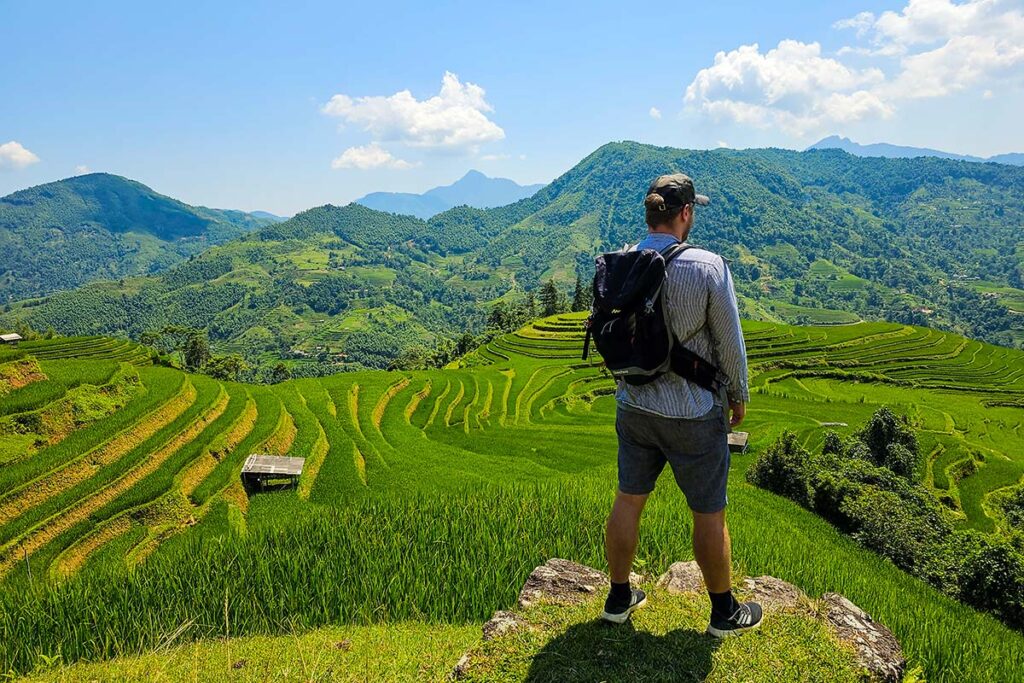
Trekking is the best way to experience Hoang Su Phi’s breathtaking landscapes. Unlike Sapa, where guided trekking is well-organized with many available guides, Hoang Su Phi is much more remote. This means it’s best to arrange a guide before you arrive.
Many travelers visit Hoang Su Phi on a tour, which includes transportation, an English-speaking guide, and local accommodations. If you are traveling independently, check with your homestay or accommodation to see if they can help arrange a guide.
Trekking options range from half-day and full-day hikes to multi-day treks, where you can stay overnight in an ethnic homestay for a deeper cultural experience.
2. Exploring ethnic villages and local cultures
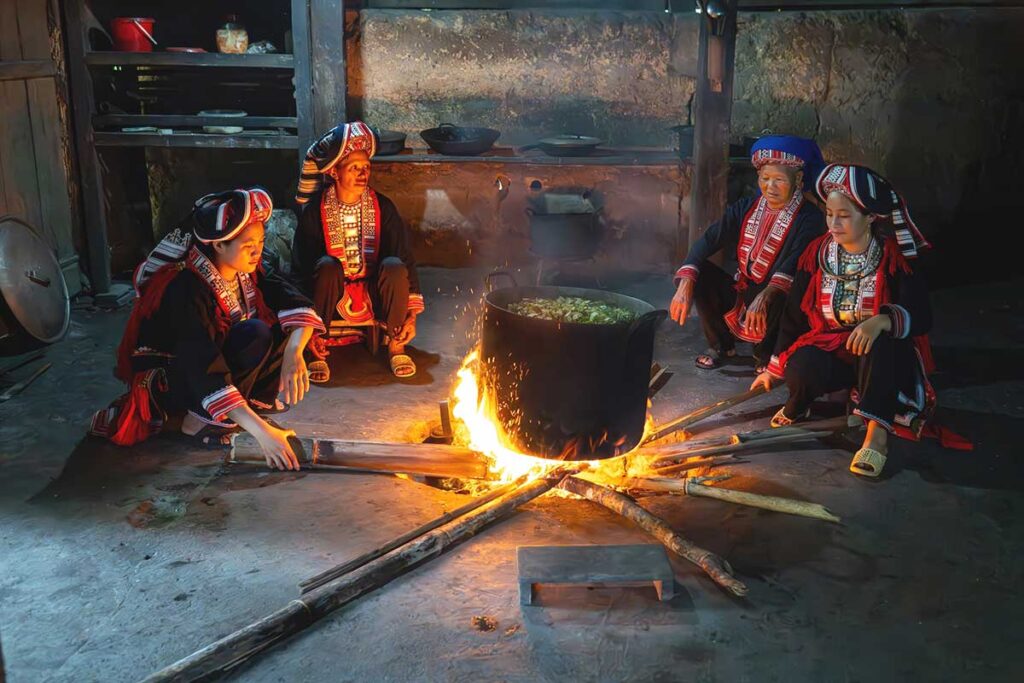
Beyond the incredible mountain scenery and terraced fields, the local culture is just as much a highlight of visiting Hoang Su Phi. This region is home to several ethnic minority groups, including the Dao, H’mong, Tay, Nung, and La Chi people, each with their own traditions, clothing, and customs.
Walking through the villages, you can see wooden stilt houses, locals working in the fields, and traditional crafts such as weaving and embroidery. Many villages still live by ancient customs, and you’ll often see people dressed in their ethnic attire, especially during markets and special gatherings.
3. Stay overnight in an ethnic homestay
Staying in a traditional ethnic homestay is a unique experience, offering a glimpse into rural mountain life. Unlike modern accommodations, homestays in Hoang Su Phi are simple and traditional:
- Houses are often made of wood or bamboo, with hard mattresses and minimal facilities.
- Cooking is usually done on an open fire, and meals are prepared from fresh, locally grown ingredients.
- Guests typically eat family-style dinners, sometimes accompanied by homemade rice or corn wine.
While it might be out of your comfort zone, even staying for just one night is a memorable and authentic experience.
4. Visit the Hoang Su Phi Market
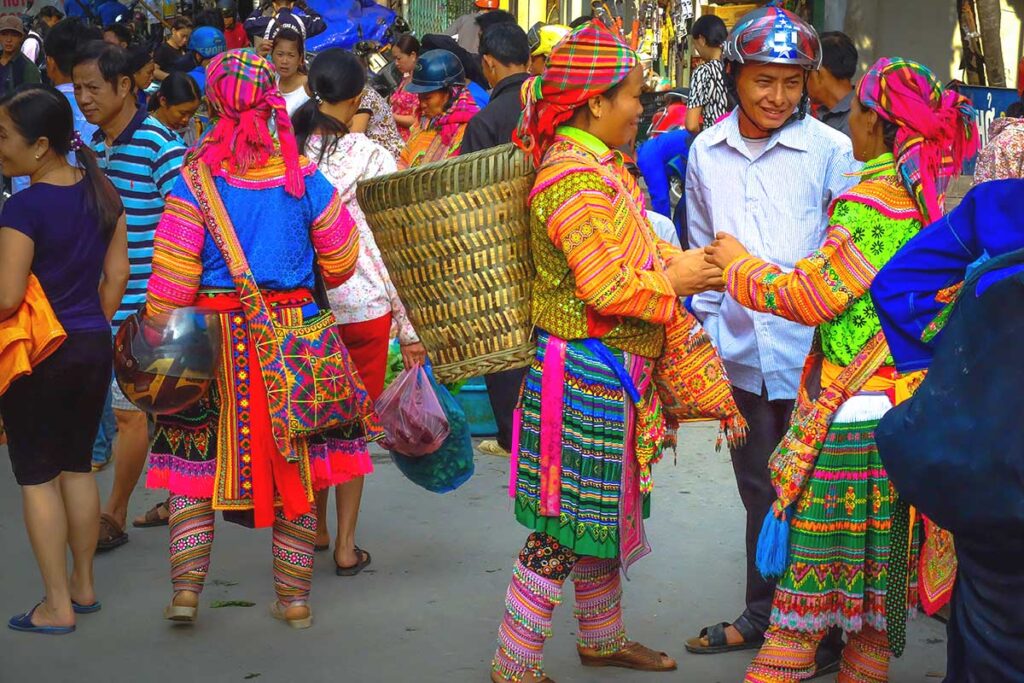
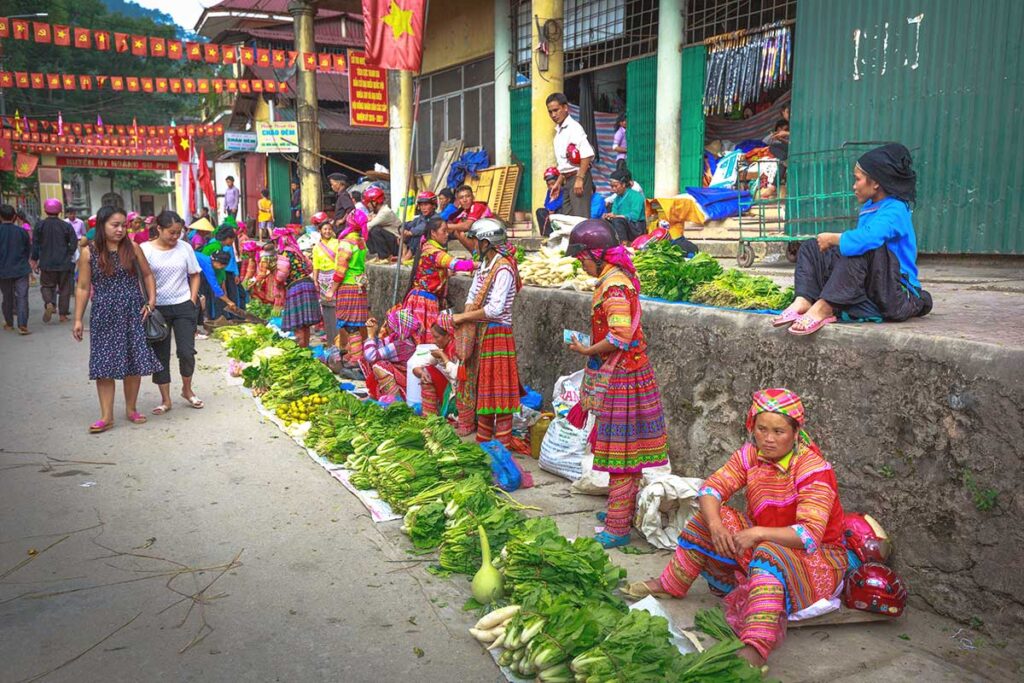
Located in Vinh Quang, the Hoang Su Phi Market is a vibrant gathering of ethnic minority people from surrounding villages.
- Daily Market – A regular market where locals buy and sell everyday goods.
- Weekly Market – A much larger event, where ethnic communities from the mountains come to trade their produce, textiles, and handmade tools.
At the weekly market, you can find fresh vegetables, colorful fabrics, handmade traditional clothing, and tools used for farming the rice terraces. But beyond shopping, the market is also a social event.
- Women gather to chat and gossip.
- Men often drink rice wine together.
- People wear their best traditional costumes, adding to the colorful atmosphere.
For travelers, this market is one of the best cultural experiences in Hoang Su Phi.
5. Climbing mountains in Hoang Su Phi
Most visitors come to Hoang Su Phi for the terraced rice fields rather than mountain climbing. Unlike Sapa, there are no cable cars or well-established hiking trails leading to the peaks, so trekking here is quite challenging. The mountains in this region require long and strenuous hikes, which means they are best suited for experienced trekkers and adventurous travelers. If you have time and are looking for a rewarding challenge, there are two significant peaks worth considering.
Tay Con Linh
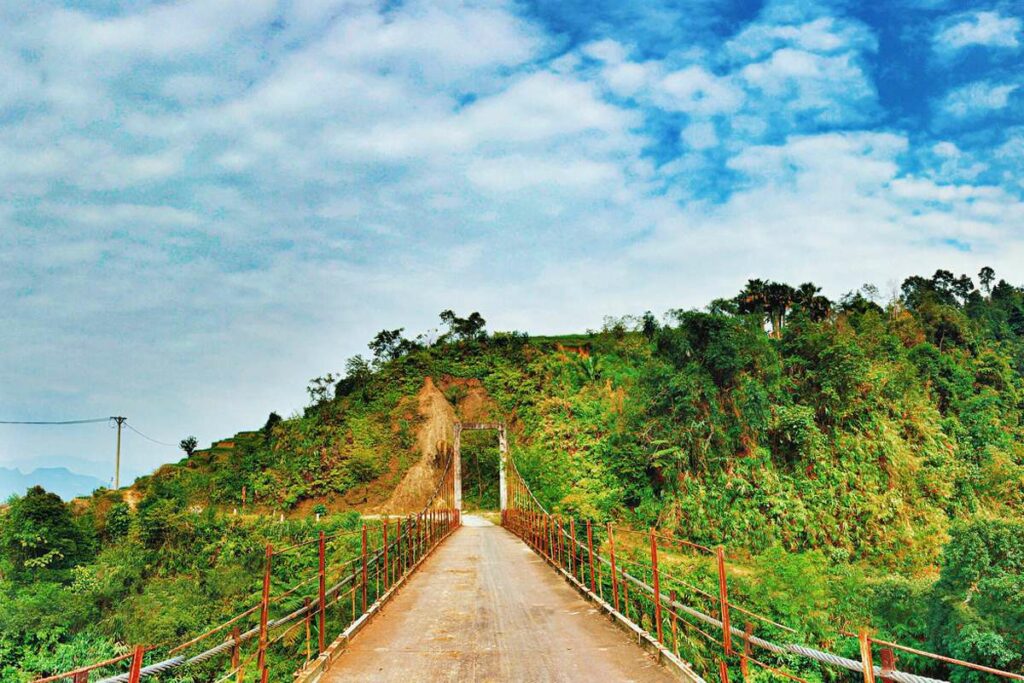
Tay Con Linh, standing at 2,419 meters, is the highest mountain in Northeast Vietnam. It is considered sacred by the La Chi ethnic people, who have lived in this region for generations. The trek to the summit takes you through dense tropical forests, with breathtaking views awaiting at the top. Because of its remote location and challenging terrain, it is best to hike with a local guide.
Chieu Lau Thi
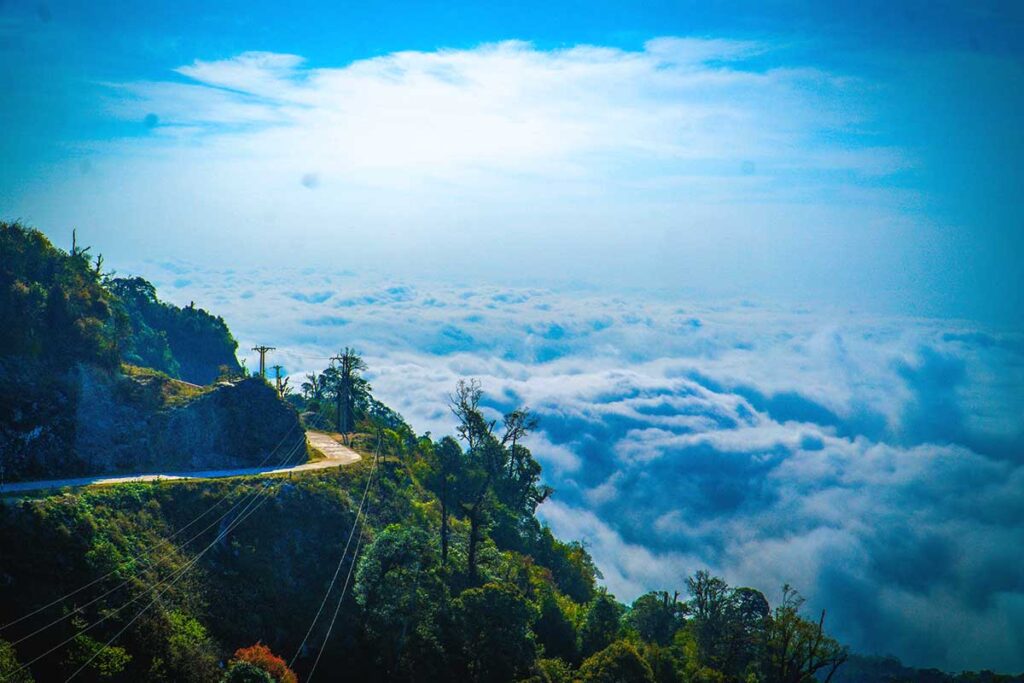
Another option is Chieu Lau Thi, also known as the “Nine-Storey Mountain,” which reaches a height of 2,402 meters. Located 42 km from Hoang Su Phi, this peak offers spectacular views on clear days, allowing you to see tens of kilometers into the distance. The mountain is also famous for its “snow tea,” a rare type of tea that grows in the high-altitude conditions surrounding the peak. Reaching the summit is a tough trek and requires a full day of hiking, making it an ideal adventure for those seeking an off-the-beaten-path experience.
6 Best rice terraces in Hoang Su Phi
Hoang Su Phi is a vast district within Ha Giang province, covering a remote mountainous region where terraced rice fields are spread across many different areas. Like all districts in Vietnam, Hoang Su Phi is divided into communes, each with its own distinct landscapes and ethnic communities. Some communes stand out for having particularly spectacular rice terraces, shaped over centuries by local farmers. Below is a selection of the six best communes to visit for experiencing Hoang Su Phi’s most breathtaking terraced fields.
1. Ban Phung Commune
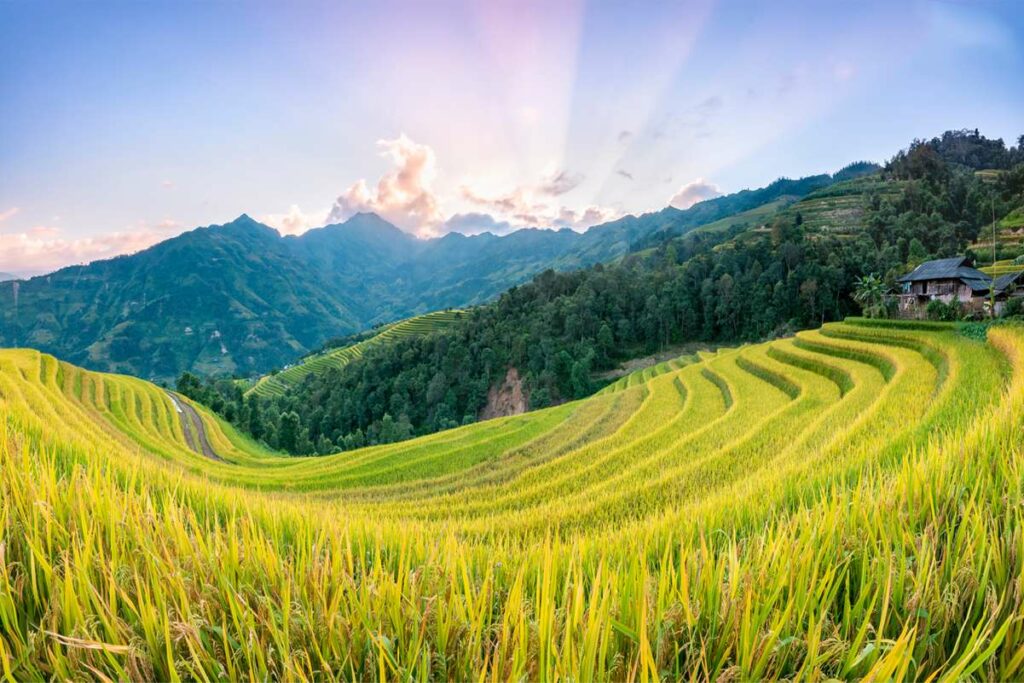
Ban Phung is one of the most remote and spectacular places in Hoang Su Phi, located near the Chinese border. From the center of Vinh Quang, it takes about 90 minutes to reach Ban Phung via a winding mountain pass. The journey itself is an experience, passing through tiny ethnic villages where locals still weave cotton by hand and cultivate rice using traditional methods.
The rice terraces in Ban Phung are among the highest in the region, appearing to stretch endlessly towards the sky. Each season offers a different charm—from the golden harvest in September to the reflective waters of the mirror season in May. The viewpoint here is particularly stunning, providing panoramic views of the steep, layered terraces. There are a few basic homestays in the area, but accommodation remains extremely limited.
2. Thong Nguyen Commune
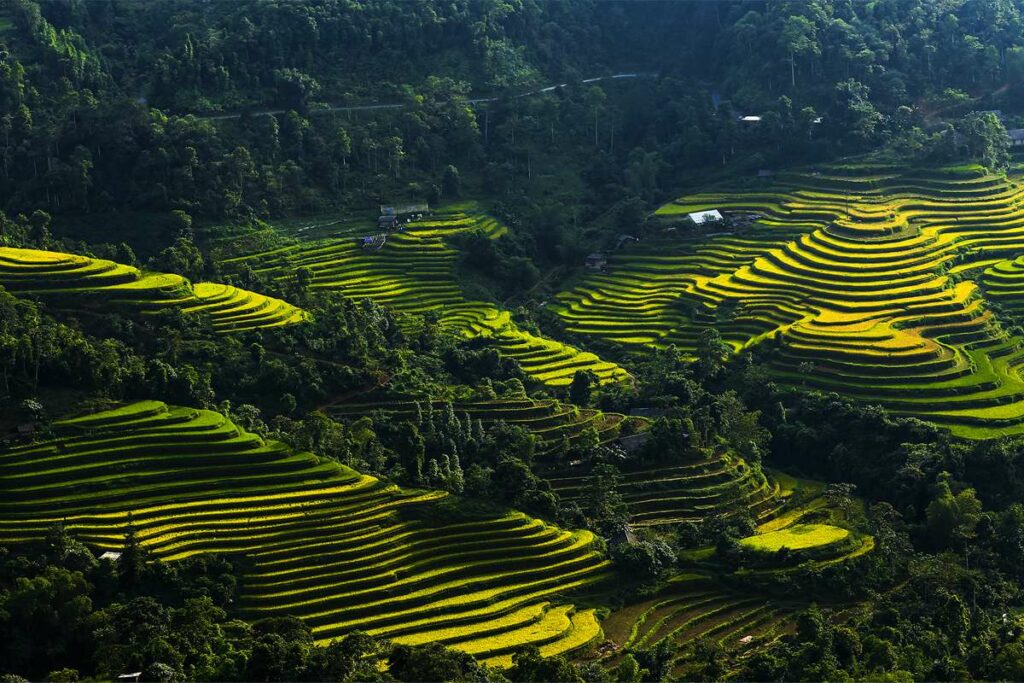
Thong Nguyen is one of the most popular areas for visitors due to its accessibility and the number of accommodations available. Located between Bac Quang and Hoang Su Phi, this commune features some of the most extensive and well-maintained rice terraces in the district. The three rivers that converge near the plateau create a fertile valley, making the landscape particularly lush and green during the growing season.
Thong Nguyen is also home to some of the best homestays in Hoang Su Phi, including Hoang Su Phi Lodge, Hoang Su Phi Bungalow, and Binh Minh Homestay. Most of these offer bungalows with incredible views of the terraces, though the quality remains relatively basic. Panhou Retreat is a more luxurious option, but it lacks direct views of the rice fields. Due to its popularity, Thong Nguyen is a great base for exploring nearby areas.
3. Nam Khoa Commune
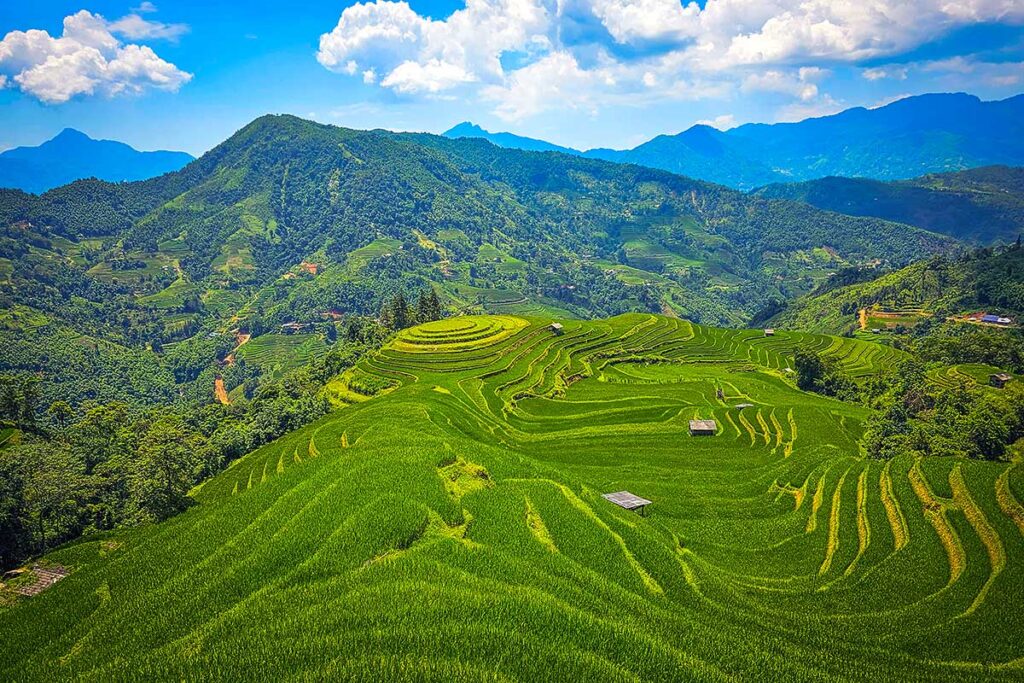
Nam Khoa is located in the south of Hoang Su Phi, about 38 km from the district center and close to Thong Nguyen. This commune has around 300 hectares of terraced fields scattered across its nine villages. The most famous area for rice terraces in Nam Khoa is Khoa Ha village, where the terraces form a circular pattern, creating a striking visual effect. A popular viewpoint in this area offers breathtaking aerial views of the layered terraces, which change colors throughout the seasons.
Trekking is also possible in Nam Khoa, with trails that take visitors through the villages and terraced fields. Though accommodations are limited, most travelers base themselves in Thong Nguyen and visit Nam Khoa as part of their exploration.
4. Ban Luoc Commune
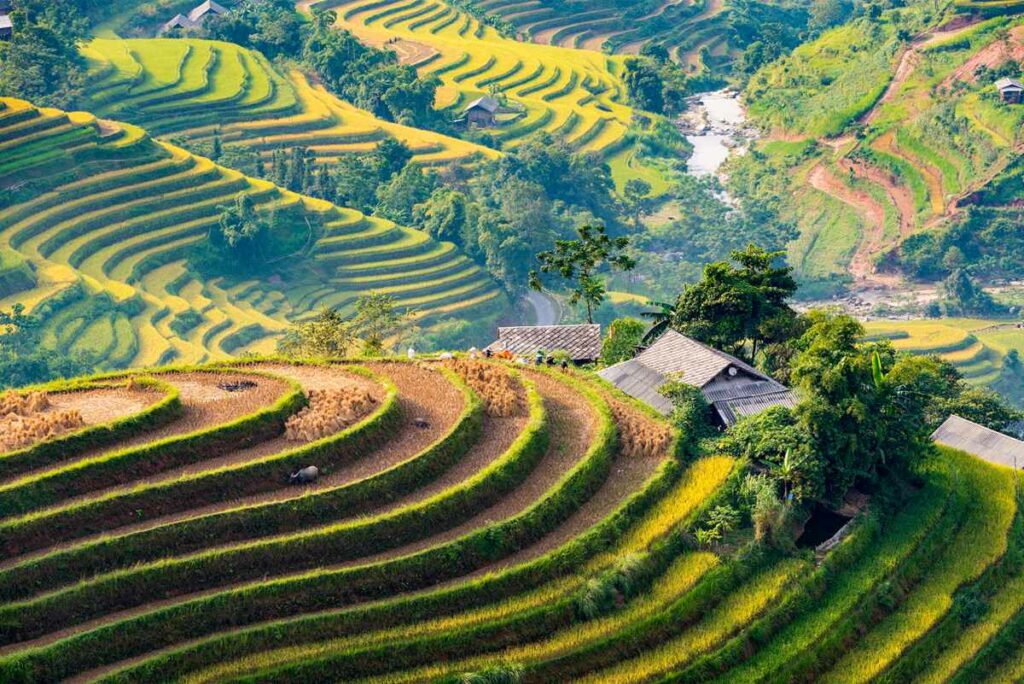
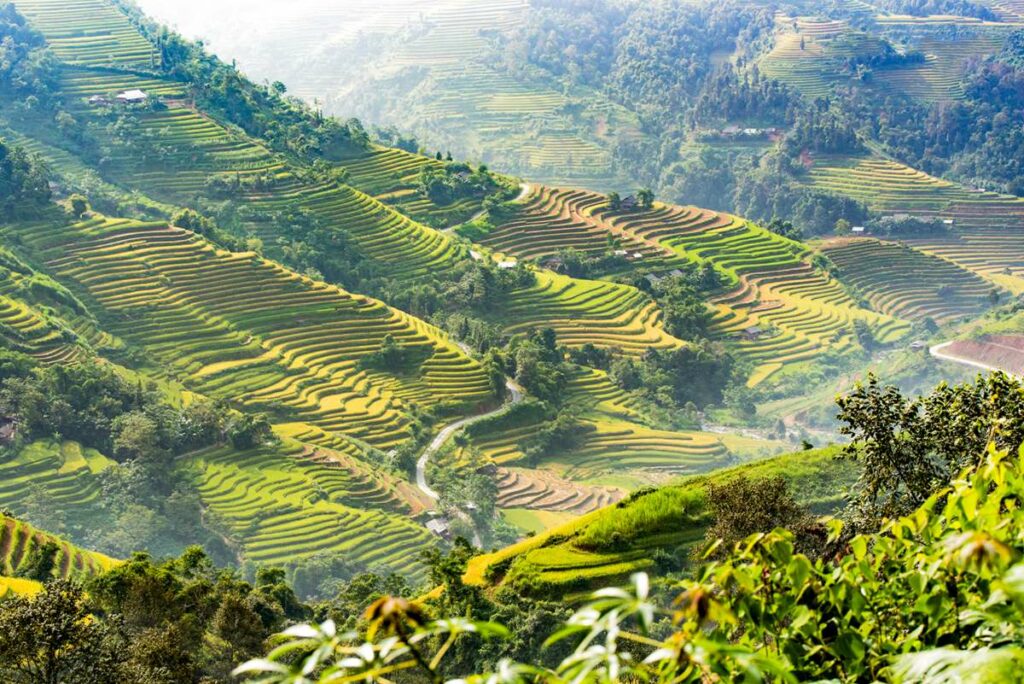
Ban Luoc is one of the most remote communes in Hoang Su Phi, known for its traditional farming lifestyle and stunning terraced rice fields. The terraces here are expansive, covering an area of approximately 200 hectares, and are cultivated primarily by the Dao and Tay ethnic groups. This area remains untouched by commercial tourism, making it one of the best places to experience authentic local life.
One of the best places to stay in Ban Luoc is Nam Ly Retreat, which offers a highly immersive experience. Visitors can participate in local activities, visit the Sunday market, and take guided treks to waterfalls. Another popular homestay is Skyview Khanh Dinh, which boasts stunning valley views and warm hospitality.
3. Ho Thau Commune
Ho Thau is located about 16 km from Nam Dich and is home to the Red Dao ethnic group. The terraces here are unique in that small forested areas are left around each field to protect against landslides, demonstrating the community’s deep connection with nature. The terraces are beautifully contoured and particularly stunning during the green season in July and August.
For those looking for adventure, Ho Thau is also a gateway to Keou Liou Ti, a rugged and lesser-known peak in the region. However, trekking to this mountain during the rainy season is not advisable due to the difficult terrain. Accommodations in Ho Thau are scarce, with only a handful of basic homestays available. (Location Ho Thau)
5. Nam Ty Commune
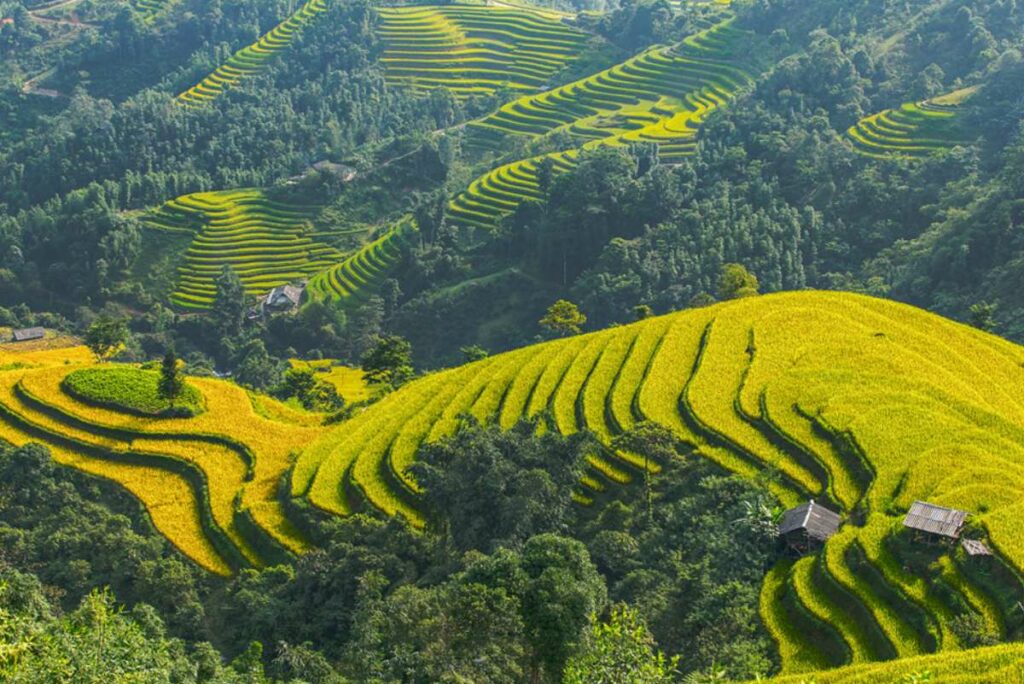
Nam Ty is located along the main road that runs through Hoang Su Phi district, making it one of the more accessible places to see rice terraces. The terraces here belong to the Red Dao people and are spread across the mountainsides in striking formations. Though it lacks the dramatic altitude of Ban Phung or Ban Luoc, Nam Ty offers beautiful views of layered rice paddies cascading down the hills.
Accommodations in Nam Ty are extremely limited, making it more of a stopover location rather than a place to base yourself for exploring the terraces. (Location Nam Ty)
Travel tips for visiting Hoang Su Phi
Combining the Ha Giang Loop with Hoang Su Phi
The Ha Giang Loop does not pass near Hoang Su Phi, so if you want to visit both, you’ll need to plan it as a separate trip rather than a detour. The closest point of the loop to Hoang Su Phi is Ha Giang City, which is both the starting and ending point of the loop. This means you can visit Hoang Su Phi either before or after doing the Ha Giang Loop.
Hoang Su Phi Trekking Tour & The Ha Giang Loop
- Hoang Su Phi: Trek through rice terraces and stay in ethnic minority villages.
- Ha Giang Loop: Explore dramatic mountain passes by car or motorbike with local guide.
How long do you need for Hoang Su Phi?
A minimum of two full days is needed to explore at least one commune, or possibly two if they are close together, like Thong Nguyen and Nam Khoa. This does not include travel time to get there, which can take half a day or more, depending on where you’re coming from. If you want to see multiple communes and experience more of Hoang Su Phi, you should plan at least three to four days.
Bringing cash
The main town, Vinh Quang, has an ATM, but there’s a good chance you won’t even visit the town if you’re staying in the countryside. Many accommodations, restaurants, and homestays in Hoang Su Phi do not accept card payments, so it’s best to bring enough cash for your entire stay.
Bring everything you need
Hoang Su Phi has few shops and no large supermarkets or pharmacies. It’s best to bring:
- Sunscreen
- Mosquito repellent
- Any personal medication
- Snacks, in case you get hungry between meals or are unsure about local food options
What Clothes to Bring
- A light rain jacket is always useful, as it protects against sun, wind, and rain.
- Layered clothing is best since temperatures can vary, especially when trekking.
- Even in warmer months, it can feel chilly in higher-altitude areas, especially in the morning and evening.
Good walking shoes
- If you plan to trek, sturdy walking or trekking shoes are essential.
- Even if you’re traveling by car or motorbike, short walks are often required to reach viewpoints or villages. Many of these paths are dirt roads that become muddy after rain, making proper footwear important.
Local specialties
The cuisine in Hoang Su Phi includes some unique regional dishes:
- Rice cooked in bamboo – Rice is steamed inside a bamboo stick and sealed with dried leaves before being cooked over a fire.
- Roasted or grilled mice – A well-known specialty of the region, though not for everyone.
- Corn wine – A strong, locally brewed alcohol made from fermented corn.
Connectivity
As in many off-the-beaten-track locations, mobile network coverage is unreliable in Hoang Su Phi. While most accommodations now offer Wi-Fi, even some basic homestays, the connection is often slow and unstable. If you’re out trekking or in remote areas, expect no internet or phone signal. If you use a Vietnamese SIM card, be aware that some areas may have no reception.
